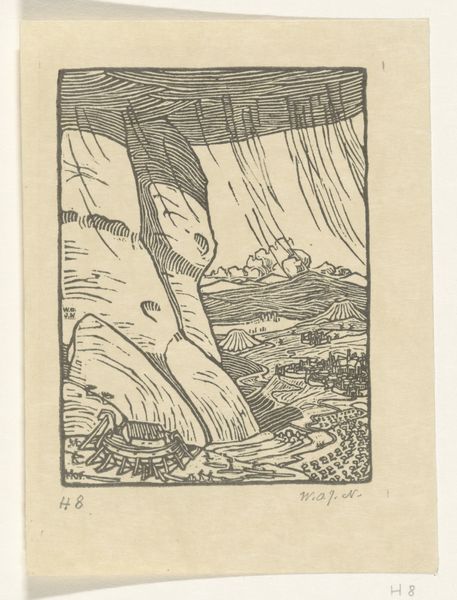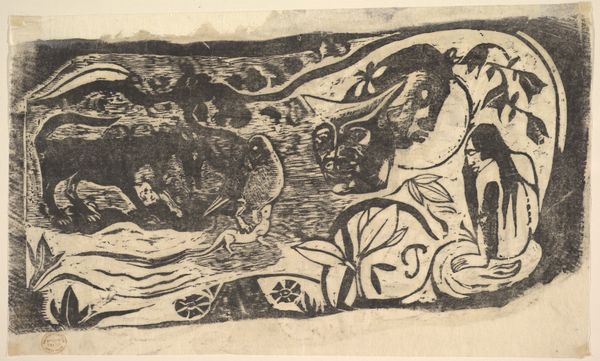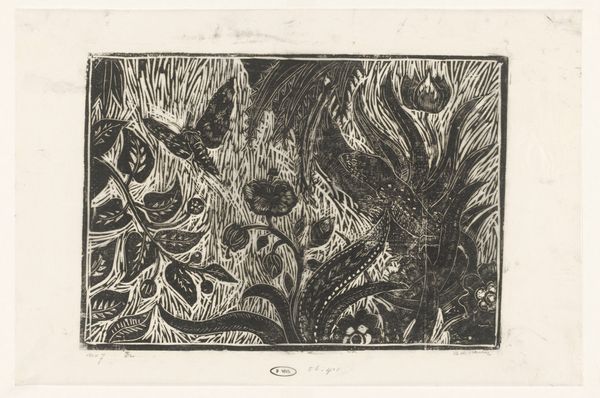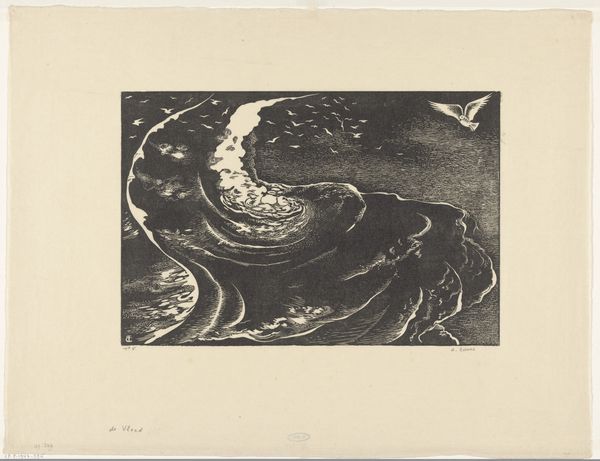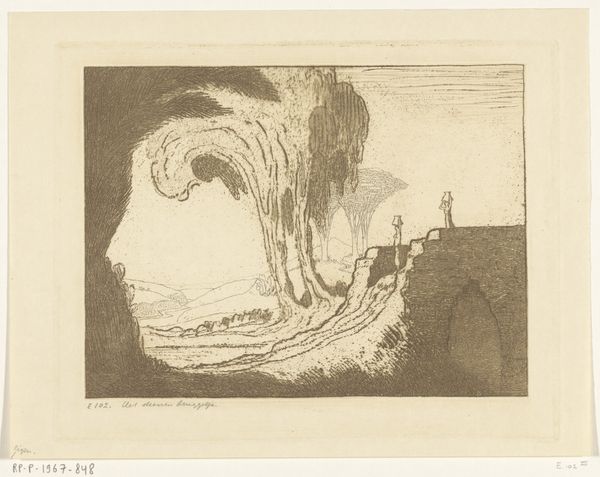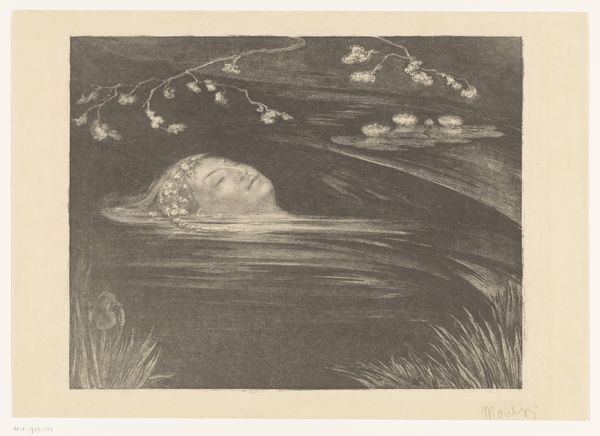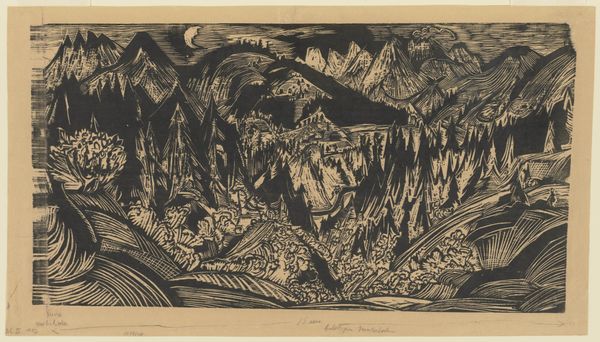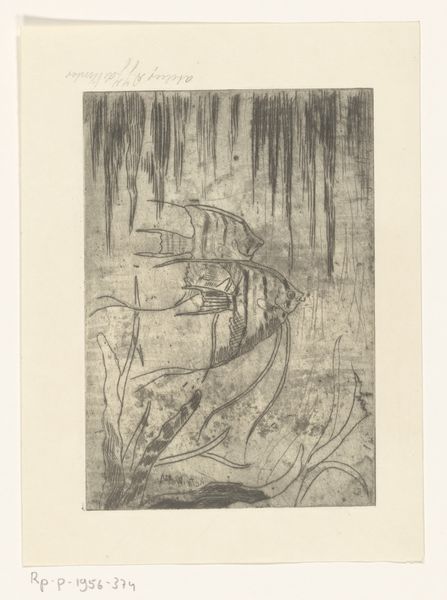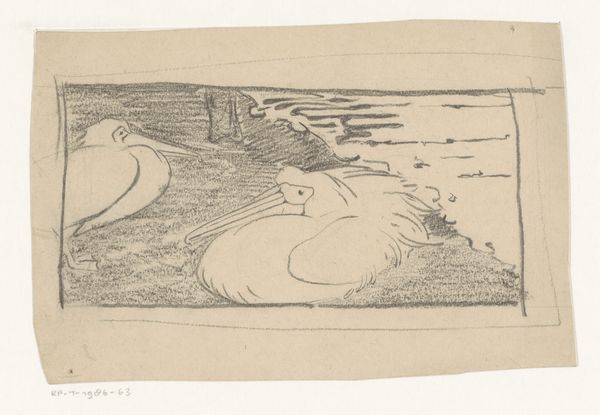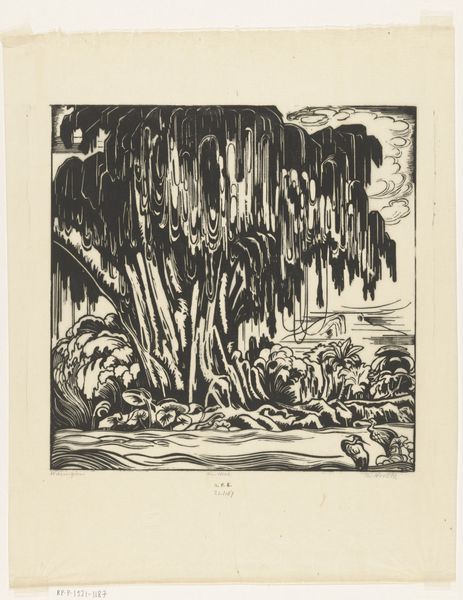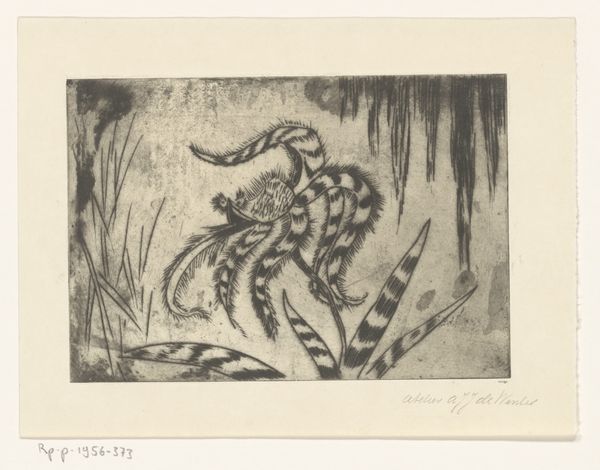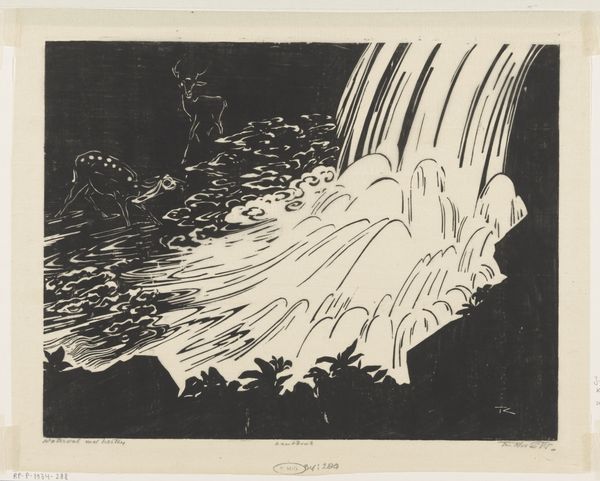
graphic-art, print, woodcut
#
graphic-art
#
art-nouveau
# print
#
landscape
#
geometric
#
woodcut
#
line
#
symbolism
Dimensions: height 203 mm, width 305 mm
Copyright: Rijks Museum: Open Domain
Editor: This is Johannes Frederik Engelbert ten Klooster’s “The Wave,” a woodcut from 1919. The stark contrast between the black and white creates such a dramatic and almost unsettling mood. What do you make of this? Curator: The dramatic effect is indeed striking. The wave, abstracted and powerful, becomes more than just water. Consider how the wave, as a symbol, often represents the immense, uncontrollable forces of nature. What might that signify, especially in the context of 1919, just after the First World War? Editor: So, you are saying it could represent the chaos of war? Curator: It could certainly be interpreted that way. Think of the emotional and psychological impact of such a devastating event. Artists often turned to nature to express feelings that were difficult to articulate directly. Do you see any other symbols in the image that reinforce this idea of turbulence? Editor: The ships being tossed around in the background seem like they might represent human vulnerability. Curator: Precisely! And the geometric lines used throughout...Do you notice a relationship between them? Editor: I see how those sharp lines could also represent the harsh realities of the time. The way everything is so stylized gives it this timeless, universal quality. Curator: Indeed. This artwork acts as a time capsule, embodying collective anxieties and perhaps a yearning for a new beginning. Its imagery speaks to the enduring human struggle against overwhelming odds, something still relevant today. Editor: That's fascinating. I never considered how much historical context could be embedded within such a seemingly simple image. Curator: Art becomes more profound when viewed as a repository of cultural memory. Exploring the symbolic language of images opens up a dialogue with the past.
Comments
No comments
Be the first to comment and join the conversation on the ultimate creative platform.

